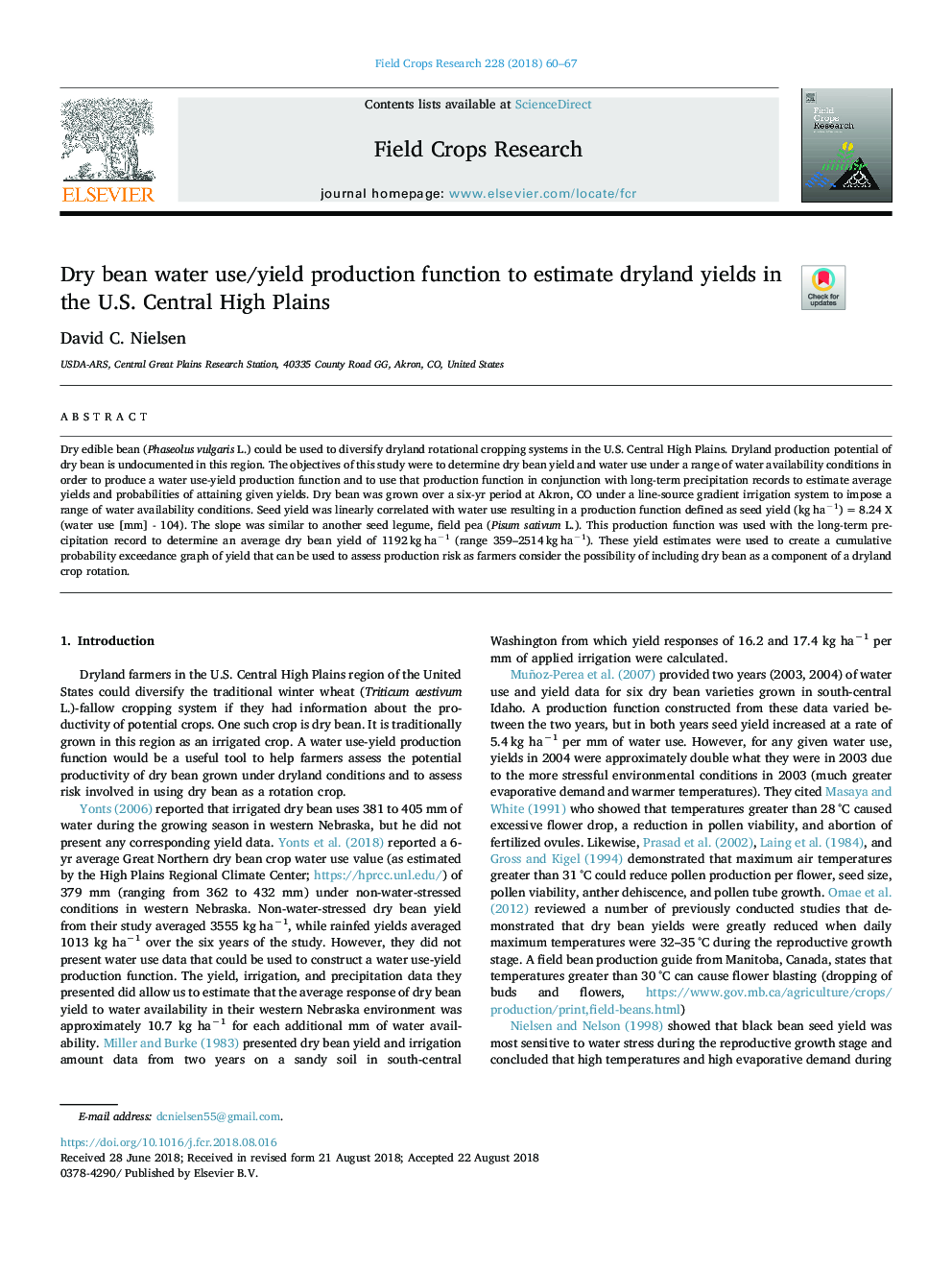| Article ID | Journal | Published Year | Pages | File Type |
|---|---|---|---|---|
| 10144827 | Field Crops Research | 2018 | 8 Pages |
Abstract
Dry edible bean (Phaseolus vulgaris L.) could be used to diversify dryland rotational cropping systems in the U.S. Central High Plains. Dryland production potential of dry bean is undocumented in this region. The objectives of this study were to determine dry bean yield and water use under a range of water availability conditions in order to produce a water use-yield production function and to use that production function in conjunction with long-term precipitation records to estimate average yields and probabilities of attaining given yields. Dry bean was grown over a six-yr period at Akron, CO under a line-source gradient irrigation system to impose a range of water availability conditions. Seed yield was linearly correlated with water use resulting in a production function defined as seed yield (kgâhaâ1)â=â8.24 X (water use [mm] - 104). The slope was similar to another seed legume, field pea (Pisum sativum L.). This production function was used with the long-term precipitation record to determine an average dry bean yield of 1192âkgâhaâ1 (range 359-2514âkgâhaâ1). These yield estimates were used to create a cumulative probability exceedance graph of yield that can be used to assess production risk as farmers consider the possibility of including dry bean as a component of a dryland crop rotation.
Related Topics
Life Sciences
Agricultural and Biological Sciences
Agronomy and Crop Science
Authors
David C. Nielsen,
